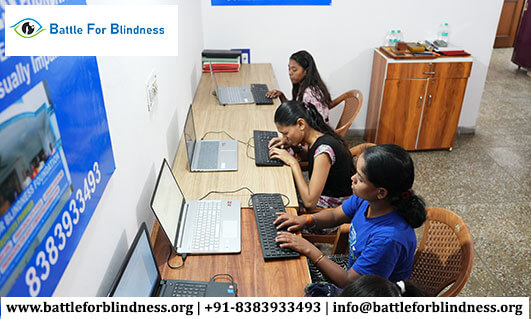
Navigating a grocery store can be a challenge for anyone, but for visually impaired individuals, it can present unique difficulties. However, with the right tools, strategies, and resources, grocery shopping can become an easier and more independent experience. This blog will provide practical tips to simplify grocery store visits, helping visually impaired shoppers navigate the aisles with confidence.
1. Plan Ahead: Make a Shopping List
One of the simplest and most effective ways to streamline your grocery shopping experience is by planning ahead. Create a detailed shopping list before you leave home. You can use accessible note-taking apps or voice-activated assistants to compile the list. Categorize items based on the store layout, grouping similar items (e.g., fruits, vegetables, dairy) to reduce the need for backtracking. Some grocery apps also allow users to save their favorite items, making it easier to organize a list for future visits.
2. Use Navigation Tools and Apps
Modern technology offers a variety of navigation tools that can assist visually impaired shoppers. Apps such as Seeing AI and Be My Eyes use smartphone cameras to provide real-time assistance, either through audio descriptions or connecting you with a live volunteer who can help guide you. GPS-enabled shopping apps can also offer store-specific navigation, helping you find specific aisles or products more easily.
If your local store offers a dedicated app, it may provide layout maps or product locations, which can be very helpful for visually impaired shoppers. Some stores also offer curbside pickup or delivery services, which might be a good alternative if you want to avoid in-store navigation.
3. Ask for Assistance When Needed
Many grocery stores offer customer service for individuals who require assistance. Don’t hesitate to ask for help from store staff if needed. They can guide you through the aisles or assist in locating specific items. Some stores even offer personal shopping services or assign staff members to help visually impaired shoppers complete their shopping more efficiently.
It’s a good idea to call ahead to see if the store offers any specialized services. Having a pre-arranged staff member meet you at the store entrance can save time and effort.
4. Shop During Off-Peak Hours
Shopping during off-peak hours can make the experience much less stressful. Fewer customers mean a quieter, less crowded environment, which allows for more personal assistance from store employees if needed. Early mornings or late evenings are typically good times to visit, as the store will be less busy, and employees may have more time to offer one-on-one support.
5. Familiarize Yourself with the Store Layout
If you frequently visit the same grocery store, it’s helpful to familiarize yourself with its layout. Most stores maintain a consistent arrangement, with staple items like bread, dairy, and produce typically placed in the same sections. Over time, you’ll become more comfortable with the store’s layout, allowing you to navigate more efficiently.
You can also ask for a store map or seek help to memorize key sections during earlier visits. Some stores label aisles and products with Braille, so be sure to ask if your local store has this feature.
6. Use Adaptive Aids for Shopping
Adaptive aids, such as shopping cart attachments and smart canes, can make a significant difference when shopping. Some smart canes can detect obstacles in your path, while shopping cart attachments can hold items securely as you browse. Using headphones connected to a navigation app can also provide real-time information while keeping your hands free.
Additionally, some grocery stores are equipped with wheelchair or scooter-friendly aisles, allowing individuals with mobility impairments to shop with greater ease.
7. Explore Online Grocery Shopping
While in-person shopping offers greater independence for some, online grocery shopping is another excellent option. Many retailers now offer accessible online platforms that allow visually impaired shoppers to browse and purchase groceries. Websites like Instacart and Amazon Fresh feature screen reader-friendly interfaces, which can simplify the process of finding and ordering products.
If you’re unsure about the quality of fresh produce or other items, some online platforms provide customer reviews or ratings, which can help you make informed decisions. Additionally, many grocery delivery services allow you to schedule convenient delivery times, reducing the need for physical store visits.
8. Utilize Loyalty Programs and Subscriptions
Many grocery stores have loyalty programs that can simplify shopping. These programs often offer discounts on regularly purchased items, making it easier to budget and save money. Some stores also offer subscription services for commonly used items, allowing you to set up automatic deliveries for essentials like milk, bread, and cleaning supplies. This can significantly reduce the frequency of store visits.
9. Stay Organized at Checkout
Once you’ve gathered your groceries, staying organized at checkout can save time and reduce stress. If you’re bagging your own items, consider grouping them by category, just as you did on your shopping list. This will make unpacking at home more efficient and less confusing.
Additionally, many stores now offer self-checkout kiosks with accessible features such as audio instructions and larger text, allowing visually impaired shoppers to check out independently.
Conclusion
Grocery shopping doesn’t have to be a daunting task for visually impaired individuals. By planning ahead, using technology, seeking assistance when needed, and becoming familiar with store layouts, you can simplify the entire process. Whether you prefer shopping in-store or online, these practical tips can help you navigate the aisles with greater confidence and independence.





